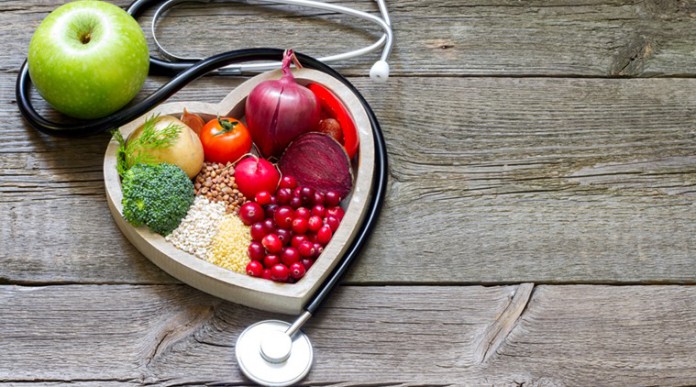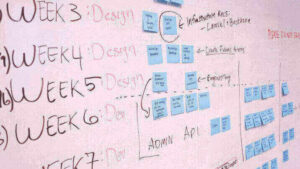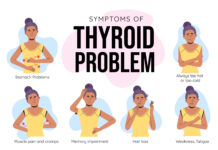The Twenties
During the 20’s a major transition from teenage to adulthood takes place with a change in lifestyle and an increased focus on career, travel, socializing, marriage etc. Discovering this new world may keep one busy and forget about health and nutrition due to the time crunch.
What to eat, How much to eat and what supplements to take if any?
·It is important to promote self cooking or to emphasize on home-made preparation which creates awareness on choosing and eating right.
·Avoid nutritional deficiencies by bringing a balance in the nutritional intake which can be sourced from a variety of food groups
·Keep a watch on your portion size since there is a drop in your basal metabolic rate during your 20’s when compared to your teenage years. Check with your Dietitian to understand your calorie requirement.

Important Announcement – EasyShiksha has now started Online Internship Program “Ab India Sikhega Ghar Se”

Top Courses in Virtual Reality
More Courses With Certification
·According to the National Health Family Survey data-4 conducted in India reveals that more than half of women are anemic in eleven States/Union Territories. Since a majority of Indians are vegetarians, iron sources along with vitamin C rich foods aids in the absorption of iron from plant sources (For eg a combination of amla and niger seed chutney, eating a spinach salad with tomatoes and capsicum)
·Limit tea / coffee / green tea/ aerated drinks/ energy drinks which hinder the absorption of iron.
Top Courses in Software Engineering
·Include 3 servings of vegetables and 1-2 servings of fruits daily which are potent sources of antioxidants to combat stress and micronutrients to prevent deficiencies.
·Do not unnecessarily use supplements with artificial sources of nutrients without any prescription from your Doctor or Dietitian. Stay away from fad diets!
Diet According to Age: The Thirties
This is the stage of life when one is trying to juggle family, kids and work. Most people end up suffering from work life imbalance, weight gain or loss and imbalances in their health profile.
What to eat, How much to eat, What supplements to take if any?
· Women are nutritional gatekeepers of every home and should focus on planning a health menu for their family with the help of a dietitian and opt for only occasional treats.
Top Courses in Quality Management System
Top Courses in Project Management
· High salt consumption and insufficient potassium intake contributes to high blood pressure, which in turn increases the risk of heart disease and stroke. The World Health Organization (WHO) recommends the use of less than 5g of salt per day.This includes avoiding preserved foods such as pickles/ papad/dried fish/ bakery goods/Chinese salt and also canned or processed foods as it contributes to higher intake of salt.
·Women should include a folate rich diet during the reproductive years of life such as peas, beetroot, oranges, chickpeas, spinach, broccoli to prevent neural tube defects in infants.
·Calcium rich and iron rich diet are also crucial for breastfeeding women. Hence include locally available leafy vegetables (palak, amaranth, methi, shepu, moringa, etc) 4 times a week with 1.5 cup(300ml) of dairy in your diet .
·Limit the use of trans fats such as vanaspati (sources; bakery goods/packed foods) and add more fibrous food in diet in the form of whole grains, vegetables and fruits.
Diet According to Age: The Forties
This is the phase of life when one is worried about hereditary diseases kicking in, stagnating weight, poor muscle mass and stubborn belly fat
What to eat, How much to eat, What supplements to take if any?
·Choose phytonutrients and an antioxidant rich diet to keep your cells healthy, prevent damage and slow the process of aging. This also has an anti-cancer effect in the body. Foods rich in these are fruits such as pomegranate, guava, amla, berries, avocado, vegetables like tomatoes, sweet potatoes, bell peppers, onions, yellow, orange and dark coloured vegetables, purple cabbage, mixed nuts and oilseeds of about half fist full daily.
 Online Courses with Certification
Online Courses with CertificationTop Courses in Personal Development
·To trim your belly fat limit the intake of carbohydrate rich foods and reduce the intake of alcohol. Switch to fiber rich, low glycemic foods such as whole wheat chapathi, bajra dosa, besan cheela, foxtail millet upma, dalia kichidi, barnyard millet bisi bele baath, buckwheat dosa, unpolished rice products rather than excessively intake of white rice, white bread and white pasta.
·Eat protein rich snacks and include in every meal which helps to increase your metabolism and helps to replenish your muscle mass.
·Check and know the status of your Vitamin D3 to which absorbs calcium, keeps your immune system strong and limits hair loss.
·Include healthy fats rich in omega 3 fatty acids/PUFA and MUFA to prevent the risk of heart disease such as a combination use of oils such as rice bran oil, olive oil(limit heating), coconut oil, gingelly oil , safflower oil , peanut oil , nuts , oilseeds, avocado etc.
About The Author
Senior Dietitian
Aster CMI Hospital
Empower your team. Lead the industry
Get a subscription to a library of online courses and digital learning tools for your organization with EasyShiksha
Request NowQ. Are EasyShiksha's internships truly free?
Yes, all internships offered by EasyShiksha are completely free of charge.
Q. How can I apply for an internship with EasyShiksha?
You can apply by visiting our website, browsing available internships, and following the application instructions provided.
Q. What types of internships are available through EasyShiksha?
EasyShiksha offers a wide range of internships across technology, business, marketing, healthcare, and more. Opportunities are continuously updated.
Q. Will I receive a certificate upon completing an internship?
Yes, upon successful completion, you will receive a certificate recognizing your participation and achievements.
Q. Are EasyShiksha's internship certificates recognized by universities and employers?
Yes, the certificates are recognized by universities, colleges, and employers worldwide.
Q. Is the download of certificates free or paid?
Access to internships and courses is free, but there is a small fee to download certificates, covering administrative costs.
Q. When can I start the course?
You can choose any course and start immediately without delay.
Q. What are the course and session timings?
These are fully online courses. You can learn at any time and pace. We recommend following a routine, but it depends on your schedule.
Q. What will happen when my course is over?
After completion, you will have lifetime access to the course for future reference.
Q. Can I download the notes and study material?
Yes, you can access and download course materials and have lifetime access for future reference.
Q. What software/tools would be needed for the course?
All necessary software/tools will be shared during the training as needed.
Q. I’m unable to make a payment. What should I do?
Try using a different card or account. If the problem persists, email us at info@easyshiksha.com.
Q. Do I get the certificate in hard copy?
No, only a soft copy is provided, which can be downloaded and printed if required.
Q. The payment got deducted but shows “failed”. What to do?
Technical errors may cause this. The deducted amount will be returned to your account in 7-10 working days.
Q. Payment was successful but dashboard shows ‘Buy Now’?
Sometimes payment reflection is delayed. If it takes longer than 30 minutes, email info@easyshiksha.com with the payment screenshot.
Q. What is the refund policy?
If you face technical issues, you can request a refund. No refunds are issued once the certificate has been generated.
Q. Can I enroll in a single course?
Yes, select the course of interest, fill in the details, make payment, and start learning. You will also earn a certificate.
Q. My questions are not listed above. I need further help.
Contact us at info@easyshiksha.com for further assistance.
ALSO READ: cardiac care 2020 and way forward
Get Course: Java Tutorial for Beginners Course















































































